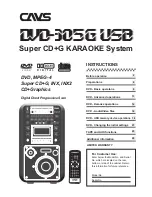
26
4.5.1 For Direct current (DC)
TIG Welding
Select the correct size and type of non
consumable tungsten and shielding gas for the
application. (See selection chart at the end of
the application section)
For (DC -) (most commonly used polarity
connect the TIG torch to the negative Dinse
plug connector and the work return lead to the
positive dinse plug connector.
For (DC+) applications connect the TIG torch
to the positive Dinse plug connector and the
work return lead to the negative dinse plug
connector. In this mode most of the heat is
generated within the non-consumable tungsten
and the heat input into the plate is reduced
resulting in lower penetration depths. (Larger
tungstens are normally selected for this
application.
Ensure that the process selector switch (3) is
switched to TIG.
Select 4T/2T on the trigger selector switch (5).
For 2T operation:
Depress the contactor switch on the torch and
hold this down for the entire weld.
Selecting the 2T function will disable the Start
current (9) and the process will immediately
rise to the selected welding current.
For 4T operation:
Depress the contactor switch on the torch
and release it when welding starts. Depress the
contactor switch again at the end of the weld.
Selecting the 4T function will enable the start
current (9) and the downslope cycle (12).
Both start current and downslope cycle time
must be manually selected.
Using a remote control device (such as a foot
control, or remote pendant).
When using a remote device ensure that the
device is properly fitted by connecting it to
the remote control outlet connector (21).The
remote operating control switch (7) must be
set in the on position.
4.5.2 For DC Pulse TIG Welding
SDC welding of thin material can be enhanced
by using the pulse mode.
When using the pulse mode for DC
applications the current will be varied between
the welding current and the set background
current.Additionally the pulse width and
pulse frequency can be adjusted. By adjusting
the pulse frequency and width the optimum
heat input for a particular application can be
obtained.
Summary of Contents for Tig200
Page 9: ...7 2 4 Shielding Gas Selection...
Page 12: ...10...
Page 13: ...11...
Page 14: ...12...
Page 15: ...13 2 9 Joint Preparation...
Page 16: ...14...
Page 17: ...15...
Page 18: ...16...
Page 19: ...17 3 0 TIG Welding of Materials 3 1 Application Summary...
Page 26: ...24 TIG ARC 200MP TIG ARC 200MP 1 2 3 4 5 6 7 8 10 11 12 16 38 37 29 24 22 23 34 32 27 9 25 26...
Page 27: ......
Page 33: ...31 Notes...
Page 34: ...33 Notes...







































